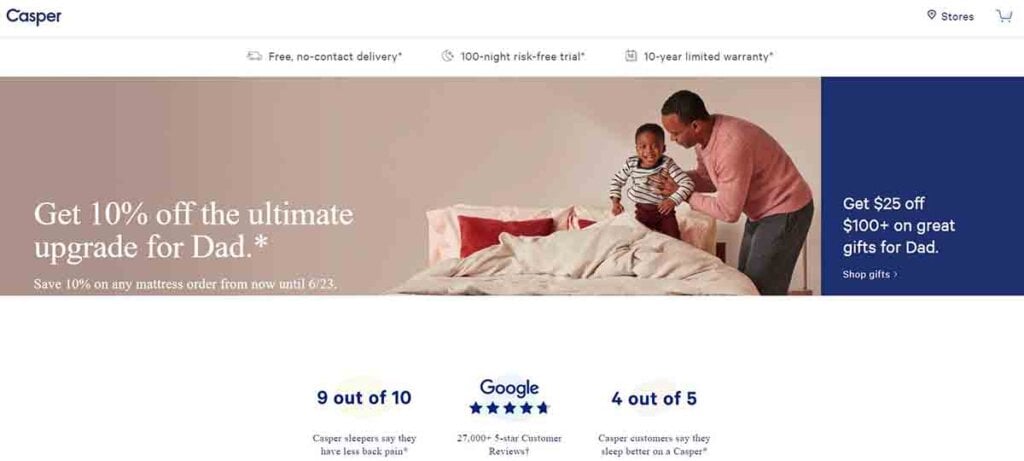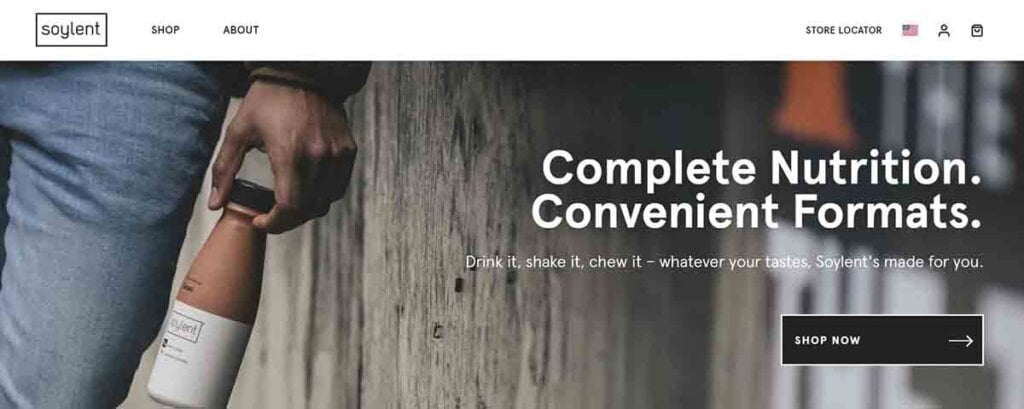Tired of handing your profits to retailers? Wondering about the benefits of direct to consumer (D2C) eCommerce? We’re weighing up the pros and cons in this handy guide.
Retail is no stranger to seismic shifts in its landscape. The traditional supply chain still works for some businesses, but will this be the case forever? The evolution of eCommerce is driven by the customer; why distance yourself from the beating heart of progress?
For businesses thinking about selling direct to consumers, the evidence is compelling and the rewards can be huge. If you do it right.
What is the direct to consumer eCommerce model?
Traditionally, manufacturers sell to customers via a chain of wholesalers, distributors, and retailers. In D2C eCommerce, manufacturers cut out those middlemen and sell to customer themselves.
The traditional retail supply chain
The traditional supply chain is a child of brick-and-mortar retail. Realistically, customers aren’t going to physically visit your factory and queue up to buy. You might have one facility producing goods for an entire country, asking someone to drive across the land to buy replacement car parts is a big ask.
That makes the logistics of shipping, warehousing, and distribution necessary. De-centralizing the number of locations where customers can access your products increases their availability and enables sales.
That was then.
The rise of direct to consumer eCommerce
The meteoric rise of eCommerce lets customers buy from wherever and get stuff delivered wherever. Stock can be stored on site where it’s manufactured and distributed to customers via your own fulfillment service.
Remember, all those wholesalers, distributors, and retailers from the traditional model are going to take their fair cut from the process. D2C cuts out the middlemen, streamlining things. This translates to savings which you can split with your customer.
If it sounds like a no-brainer so far, you might want to hold your horses. See, the term ‘middleman’ is often spat like a dirty word in business, almost synonymous with ‘parasite.’ In the real world, that’s simply not the case.
Those middlemen are doing an essential job getting your product in front of customers. Logistics, marketing, customer service; all these and more become your responsibility if you decide to go down the direct route. A solid strategy is essential, so you need to ask yourself…
Should your business use the D2C eCommerce model?
This is almost a trick question. Regardless of whether your business goes for the direct to consumer eCommerce approach or not, your customer definitely is.
Follow the customer!
Studies show as many as 59% of customers research purchases directly on a brand’s site, and 55% now prefer to buy direct from manufacturers rather than retailers.
In the US, 40% of shoppers expect to be making over 40% of their purchases from D2C brands in the next five years. As technology advances to erase the friction from this model, those stats are only likely to increase.
So, if you’re following your customer, the smart money is on D2C. It bears repeating that the Blockbusters of this world went the way of the dodo because they refused to adapt to changing consumption habits.
Take control of your brand
Perhaps the biggest advantage of D2C eCommerce is that you take full control over you brand conversation.
Your eCommerce marketing efforts become fully focused on customers, not wholesalers and distributors, some of whom are engaged in their own marketing efforts.
This lets you focus your messaging with a precision which wasn’t possible before. You can create a personalised digital experience for customers, saving their preferences and targeting marketing to deliver maximum value.
With that being said, if you’re transitioning from a traditional supply chain to a D2C model, you’re going to have to have a tough conversation with your existing wholesalers, distributors, and retailers.
The change might not happen overnight, or you might prefer a hybrid model where you sell both D2C and through middlemen. But history shows that making the jump can be highly lucrative.
D2C examples and success stories
Thankfully, your business doesn’t exist in a vacuum. By studying the examples set by successful D2C pioneers, you take some of the sting out of the transition. A good place to start would be these three D2C eCommerce megastars who knocked it out of the park.
Dollar Shave Club

Dollar Shave Club almost need no introduction by now. They saw that the ‘blades and razors’ model of selling a cheap base product with costly top-ups had become outdated.
They seized the initiative with a low-cost customizable subscription model. Customer service is central to their success. Subscriptions can be cancelled any time, returns are easy, and the site is a dream to navigate.
But we all know the real triumph of Dollar Shave Club is their viral video which, at the time of writing, sits on a cosy 26.8 million YouTube views. Proof that bold, clever marketing statements still cut through the noise.
Casper

Casper Beds didn’t just spot a tiny niche in their market’s purchase journey. They realized the whole process of buying a bed was deeply unpleasant and decided to do something about it.
One of the objections to the D2C eCommerce model is that customers want choice, that they’ll prefer to compare several products rather than be restricted to one product for one purpose from one supplier. Casper turned this misconception on its head by limiting their range to one fine-tuned product.
By providing one great bed at a fair price, direct to your door, they sold $100 million worth of these beds in two years. This was driven by a meticulous SEO strategy to break through and get seen. It wasn’t easy or cheap, but it was worth it.
Soylent

Then there’s Soylent, whose agility and connection with their audience are astounding. Marketed to the tech geek crowd, these meal replacements are constantly reinvented and given ‘version numbers’ as one would do when iterating software.
Such is the strength of the dialogue between Soylent and their audience that their branded subreddit currently has over 36,100 members, and still develops products in line with feedback from these users.
The brand has taken a few knocks in its history, it was famously banned in Canada, but there’s a lesson to be learned there for any aspiring D2C brand. A strong connection to the audience helps you weather the storm. After all, when you name yourself after a sci-fi food which was made from people, you’re definitely signalling to the tribe.
A common theme among successful D2C eCommerce brands
If you’ve spotted something connecting these three stories, it’s their ability to leverage the digital sphere to get themselves in front of the right people.
The importance of eCommerce marketing in the D2C world can’t be overstated.
Perfecting your digital marketing strategy for D2C eCommerce
D2C eCommerce is made possible by digital channels, particularly social media where much of today’s marketing happens. That’s where the hard work begins, because digital marketing is a highly competitive arena demanding a solid strategy.
Social media marketing
Social media marketing isn’t the free exposure it once was. Many platforms now require paid ads to gain any traction, so be sure your money is going to the right places. If you’re a wholesaler thinking of switching to direct to consumer eCommerce, make sure you factor this cost in!
LinkedIn is a good place to sell office supplies, but you won’t sell much clothing there. Likewise, Instagram is a hotspot for flashy accessories, but less useful for corporate branded merchandise.
Search engine optimisation
(SEO) ensures you’re speaking your customers’ language by using the right keywords in the right places. Optimizing your website secures exposure for your brand, while optimizing product titles and descriptions gets eyes on the goods and drives sales.
It’s not easy though, and can take time to generate traffic. In some ways this is a longer-term initial investment for business looking to go down the direct to consumer route.
User-generated content
User generated content is perhaps the greatest testimonial of all. It’s also a marketing tactic that is digital in nature and therefore favors D2C eCommerce merchants.
Ask happy customers to upload themselves to social media using your product, along with a short snappy custom hashtag, and you’re golden. Leveraging Facebook groups and Reddit to build a vibrant, engaged community is always time well spent. It won’t cost you anything either!
Influencer marketing
Influencer marketing lets you target pre-existing communities within your eCommere niche. You don’t need to spend Kylie Jenner money either. A well-planned campaign backed by a handful of micro-influencers on Instagram can get eyes on your brand and spark a conversation.
Review your digital strategy periodically, say every six months. This lets you communicate with consistency while still reacting to changing trends and customer behavior.
Related article: 20 Essential eCommerce Marketing Tactics for 2020
eDesk takes the stress out of D2C eCommerce
Whatever channels you use to when selling direct to consumer, you’ll need to give all your new customers the care and support they deserve. Using eDesk, the world’s leading eCommerce customer service software, is the best way to provide that.
eDesk integrates with every major online marketplace in the world, as well as all your social channels and inventory management software. This means you’ll have a single place for all incoming customer queries, with the required information to solve their issue immediately to hand.
As well as a consolidated inbox, eDesk has several time-saving features to make eCommerce customer service a walk in the park. The magic wand feature uses artificial intelligence to suggests suitable responses to customer questions. This enables you to solve customer support tickets with the click of a button.




